Number Navigators: How to Select Pairs with Targeted Sums and Differences
Sometimes, we’re faced with challenges where we need to find pairs of numbers that either sum up or have a specific difference. This skill is essential for various mathematical and real-world scenarios. Let’s dive into the methods to pick such number pairs.
[include_netrun_products_block from-products="product/5-staar-grade-4-math-practice-tests-extra-practice-to-help-achieve-an-excellent-score/" product-list-class="bundle-products float-left" product-item-class="float-left" product-item-image-container-class="p-0 float-left" product-item-image-container-size="col-2" product-item-image-container-custom-style="" product-item-container-size="" product-item-add-to-cart-class="btn-accent btn-purchase-ajax" product-item-button-custom-url="{url}/?ajax-add-to-cart={id}" product-item-button-custom-url-if-not-salable="{productUrl} product-item-container-class="" product-item-element-order="image,title,purchase,price" product-item-title-size="" product-item-title-wrapper-size="col-10" product-item-title-tag="h3" product-item-title-class="mt-0" product-item-title-wrapper-class="float-left pr-0" product-item-price-size="" product-item-purchase-size="" product-item-purchase-wrapper-size="" product-item-price-wrapper-class="pr-0 float-left" product-item-price-wrapper-size="col-10" product-item-read-more-text="" product-item-add-to-cart-text="" product-item-add-to-cart-custom-attribute="title='Purchase this book with single click'" product-item-thumbnail-size="290-380" show-details="false" show-excerpt="false" paginate="false" lazy-load="true"]Picking Numbers with a Specific Difference or Sum
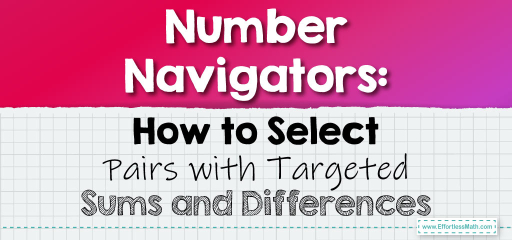
Example 1:
Pick two numbers that sum up to \(15\).
Solution Process:
Multiple pairs can sum up to \(15\), such as:
1. \(7 + 8\)
2. \(6 + 9\)
3. \(5 + 10\)
… and so on.
Answer:
One possible pair is \(7\) and \(8\).
The Absolute Best Book for 5th Grade Students
Example 2:
Pick two numbers that have a difference of \(5\).
Solution Process:
Again, multiple pairs can have a difference of \(5\), such as:
1. \(10 – 5\)
2. \(15 – 10\)
3. \(20 – 15\)
… and so on.
Answer:
One possible pair is \(10\) and \(5\).
Picking numbers with a specific sum or difference is a foundational skill in mathematics. It’s crucial for problem-solving, especially in algebra and arithmetic. By understanding the relationship between numbers and their operations, you can quickly identify pairs that meet the criteria. This skill is handy for various applications, from splitting bills to budgeting and planning. Keep practicing to enhance your ability to swiftly pick the right number pairs!
Practice Questions:
1. Find two numbers that sum up to \(20\).
2. Pick two numbers with a difference of \(7\).
3. Choose a pair of numbers that sum up to \(30\).
4. Identify two numbers with a difference of \(3\).
5. Select two numbers that, when added, give \(50\).
A Perfect Book for Grade 5 Math Word Problems!
Answers:
1. \(10\) and \(10\), \(11\) and \(9\), \(12\) and \(8\), etc.
2. \(10\) and \(3\), \(14\) and \(7\), \(20\) and \(13\), etc.
3. \(15\) and \(15\), \(20\) and \(10\), \(25\) and \(5\), etc.
4. \(7\) and \(4\), \(10\) and \(7\), \(13\) and \(10\), etc.
5. \(25\) and \(25\), \(30\) and \(20\), \(35\) and \(15\), etc.
The Best Math Books for Elementary Students
Related to This Article
More math articles
- 5 Best Digital Pen Tablets for Online Math Teaching in 2026
- 3rd Grade MEAP Math Practice Test Questions
- 5 Best Math Books for College Students: A Comprehensive Review
- 6th Grade NSCAS Math Worksheets: FREE & Printable
- 7th Grade MAP Math Practice Test Questions
- 6th Grade OST Math Practice Test Questions
- How to Combine Like Terms? (+FREE Worksheet!)
- How to Distinguishing Numbers: Prime vs. Composite
- How to Study Math Effectively in College?
- Ratio, Proportion and Percentages Puzzle – Challenge 30
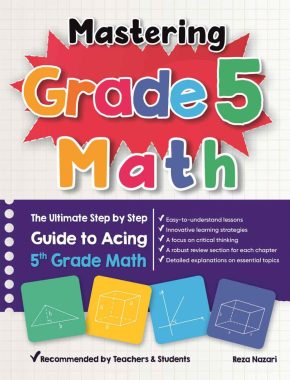
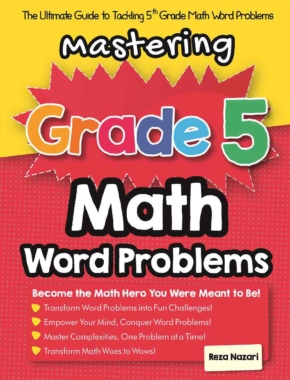
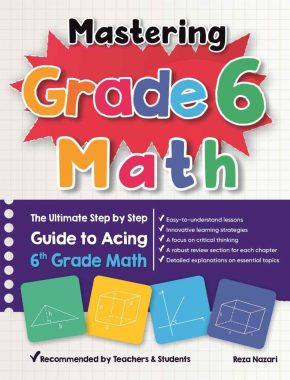
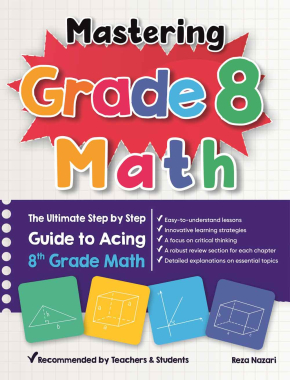


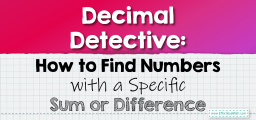
What people say about "Number Navigators: How to Select Pairs with Targeted Sums and Differences - Effortless Math: We Help Students Learn to LOVE Mathematics"?
No one replied yet.